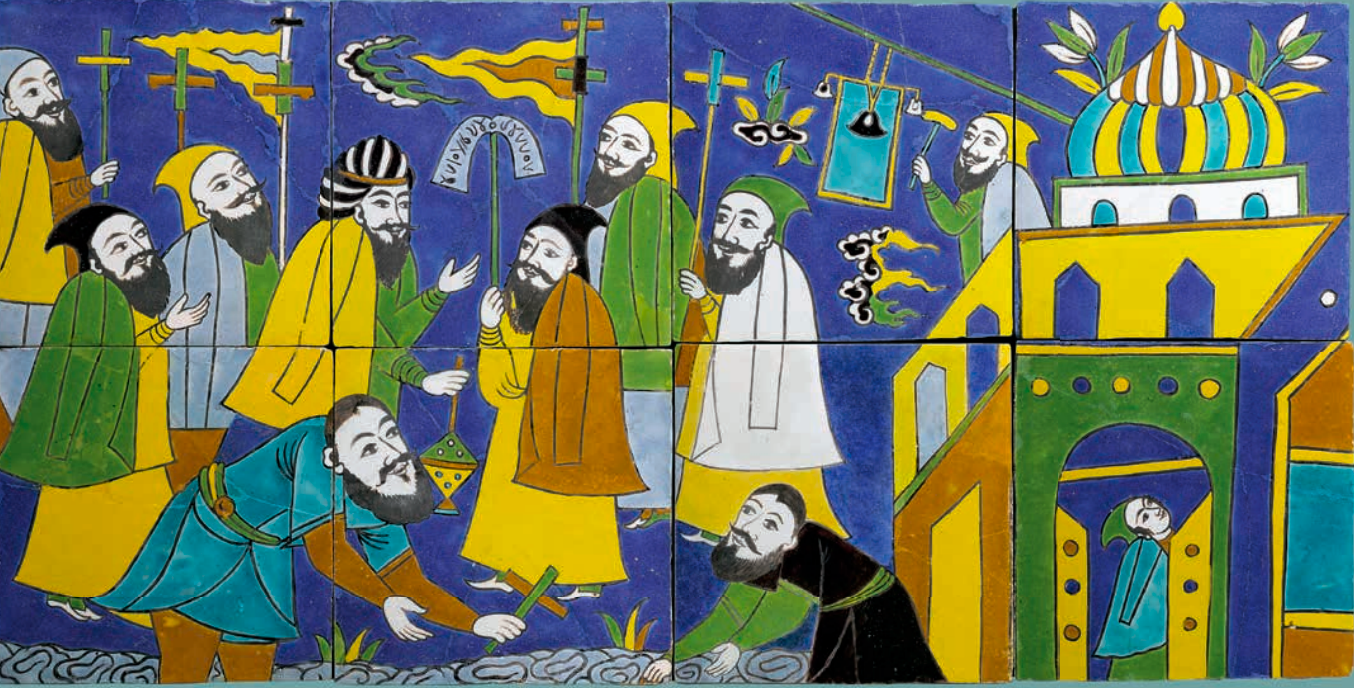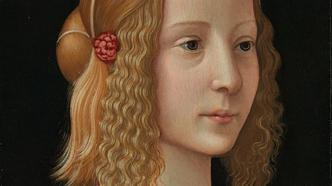


Inside the British National Gallery
"They really agreed with the concept of a miniature version of the National Gallery"
The Paper: This special exhibition is the first cooperation between the Shanghai Museum and the National Gallery of England. What kind of opportunity led to this cooperation?
Chu Xin: The opportunity is at the end of 2020, when we saw the National Gallery of Western Art in Tokyo, Japan launch a collection exhibition of the British National Gallery. It was originally held for the Tokyo Olympics, but due to the impact of the epidemic, the exhibition was postponed. Later, it was exhibited at the National Gallery of Australia in Osaka and Canberra. The exhibition was very good and the works were very shocking, so we immediately contacted the curator of the National Gallery of England. At that time, we got in touch with Neil, an old friend of Shanghai Expo and the former curator of the British Museum. Express the desire for cooperation by email.
Coincidentally, Finaldi, the curator of the British National Gallery, said that in 2007, when he was the deputy curator of the Prado Museum in Spain, he cooperated with the Shanghai Museum to hold the exhibition "From Titian to Goya". I have a particularly good impression of the Shanghai Museum, "It is a wonderful museum". He organized the exhibition team to connect with us, so our cooperation intention was quickly reached. But because their previous exhibitions in Japan were touring in Australia, they could no longer come to Shanghai. This time, the exhibits equivalent to the British National Gallery have re-planned an exhibition to make a second trip to Asia for Chinese audiences. We started preparing for this exhibition at the beginning of 2021, and it has been exactly two years now.
The Paper: As a curator, it takes a lot of courage and fate to choose a partner. In your eyes, what kind of museum is the National Gallery of England? How do you understand the positioning of the National Gallery of England?
Chu Xin: In the catalog of this exhibition, their curator Susanna Avery-Quash wrote a long article introducing the collection history of the British National Gallery. We can see that as a national-level art museum, it is different from other major European museums, which are built on the collections and heritage of the former royal family. For example, the Louvre and the Prado Museum are built on the royal collections of France and Spain, and the Pitti Palace in Florence preserves the huge and luxurious collection of the Medici family.
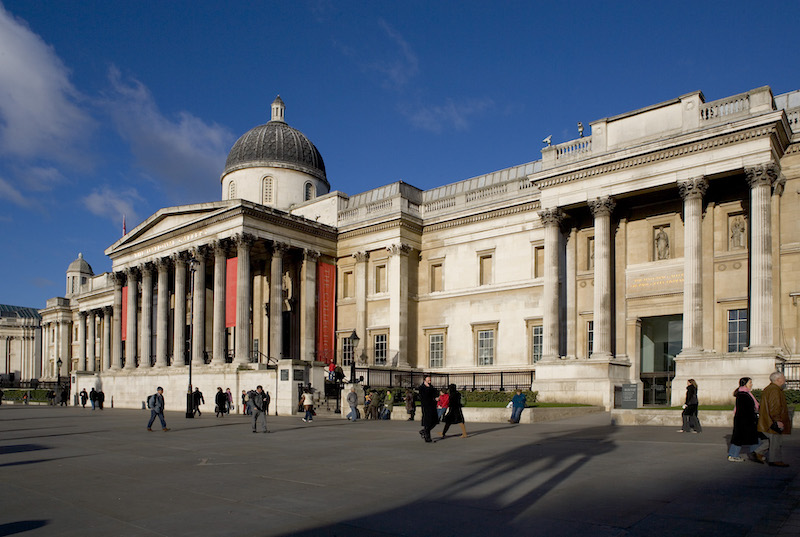
British National Gallery exterior
The National Gallery was established in 1824 from a private collection of 38 works. Its collection has been enriched over 200 years, a masterpiece of the ambitions of successive directors and councils and the taste of numerous generous private donors. Several directors are academic and artist, and they are the president of the Royal Academy of Fine Arts.
It is the only art museum in the world, through its small size, the audience can experience a complete general history of European painting. There are more than 2,600 works, most of which are exhibited in the exhibition hall all the year round, and rarely travel abroad. And the quality is very fine, from medieval religious paintings to 20th century paintings, but the overall composition of the art museum collection is always inclined to European classical masters.
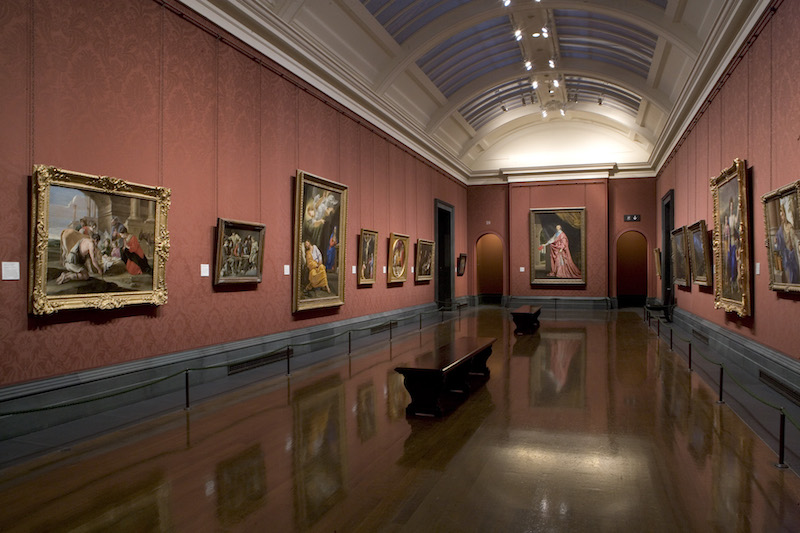
Inside the British National Gallery
Therefore, the nature, positioning and temperament of the British National Gallery are actually very similar to those of the Shanghai Museum. We mainly collect ancient Chinese artworks, emphasizing classics; we do not inherit the collections of the palace, but build on social donations and government purchases. 1/4 of our precious cultural relics are donated by collectors relying on the power of society.
The British National Gallery is also one of the top ten most popular art museums in the world. Its annual visitor volume is about 6 million, which is nearly three times that of the Shanghai Expo, which shows its popularity among global audiences.
The Paper: This exhibition will exhibit a total of 52 classic works, covering European art masters spanning 400 years from Botticelli to Van Gogh. The National Gallery has a very rich collection. How did you choose the exhibits? And finalize the list?
Chu Xin: The process of selecting exhibits is relatively long, and it is also a very friendly but game-changing process. At the beginning, their curator recommended their director of the exhibition department to us. Their director of exhibition department and curator first gave us a list of 10 works. These 10 works are what they are willing to plan for the next "Asia The most important exhibits of the "Journey" exhibition.

Collections of the British National Gallery are waiting at the airport to be shipped to China
After reading the list of these 10 works, we compared them with their exhibits in Japan and did a lot of research, hoping to replace some of these 10 works in line with the aesthetic taste of Chinese audiences. Based on this In view of this idea, we both held several online meetings, and the curatorial teams of both parties discussed the general positioning and storytelling of the exhibition sent to China.

Exhibits are placed in the turnover warehouse
We also studied the characteristics of the British National Gallery - they don't have a lot of collections, and most of the about 2,600 collections are exhibited on the exhibition line. Although the collection is small but exquisite, it is one of the few museums in Europe that can Take a look at the collection context of the entire Western or European classic art history. We put forward such a concept: let the audience experience a condensed and quintessential Western art history, which is also a mini version of the British National Gallery. When they heard about the miniature National Gallery, they agreed. The opposing curatorial team released a relatively complete list of works. After reading it, we put forward specific requirements, such as which artist and which piece of work we hope to come to, which is our dream list. And then they also adjusted the list in good faith. After repeated rounds like this, 52 works by 50 artists were finally determined.
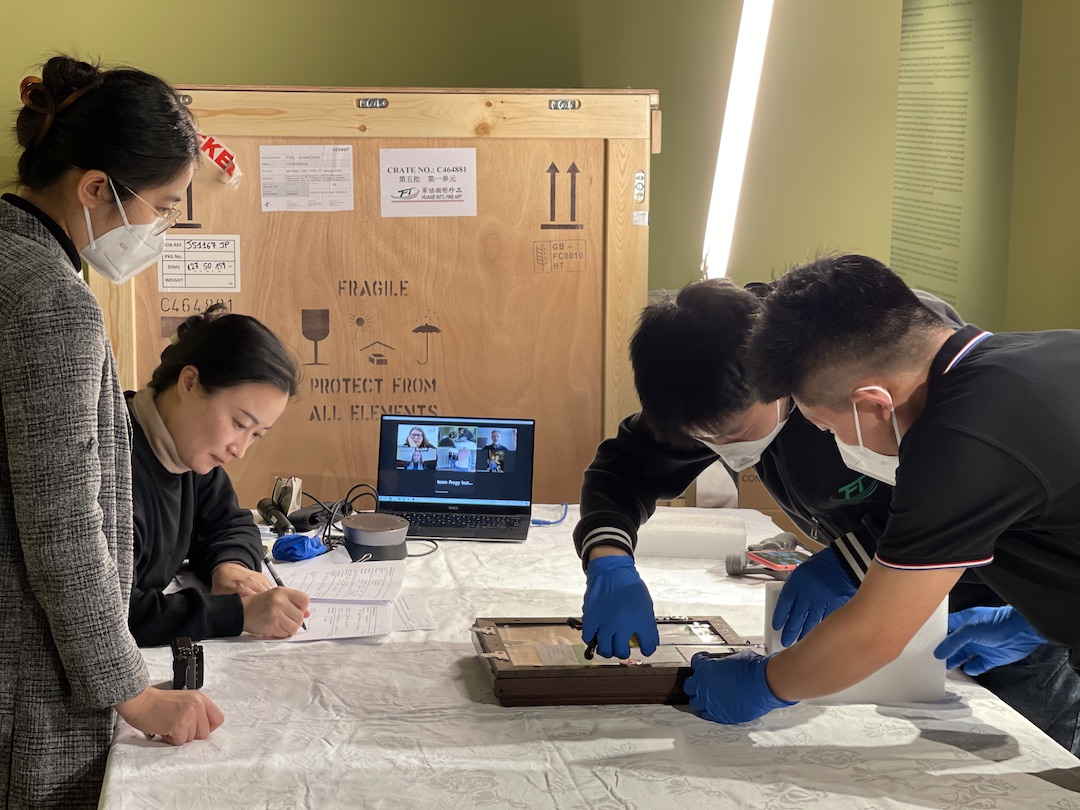
Shanghai Museum's "National Gallery Collection Exhibition" exhibition site, online communication with the staff of the National Gallery
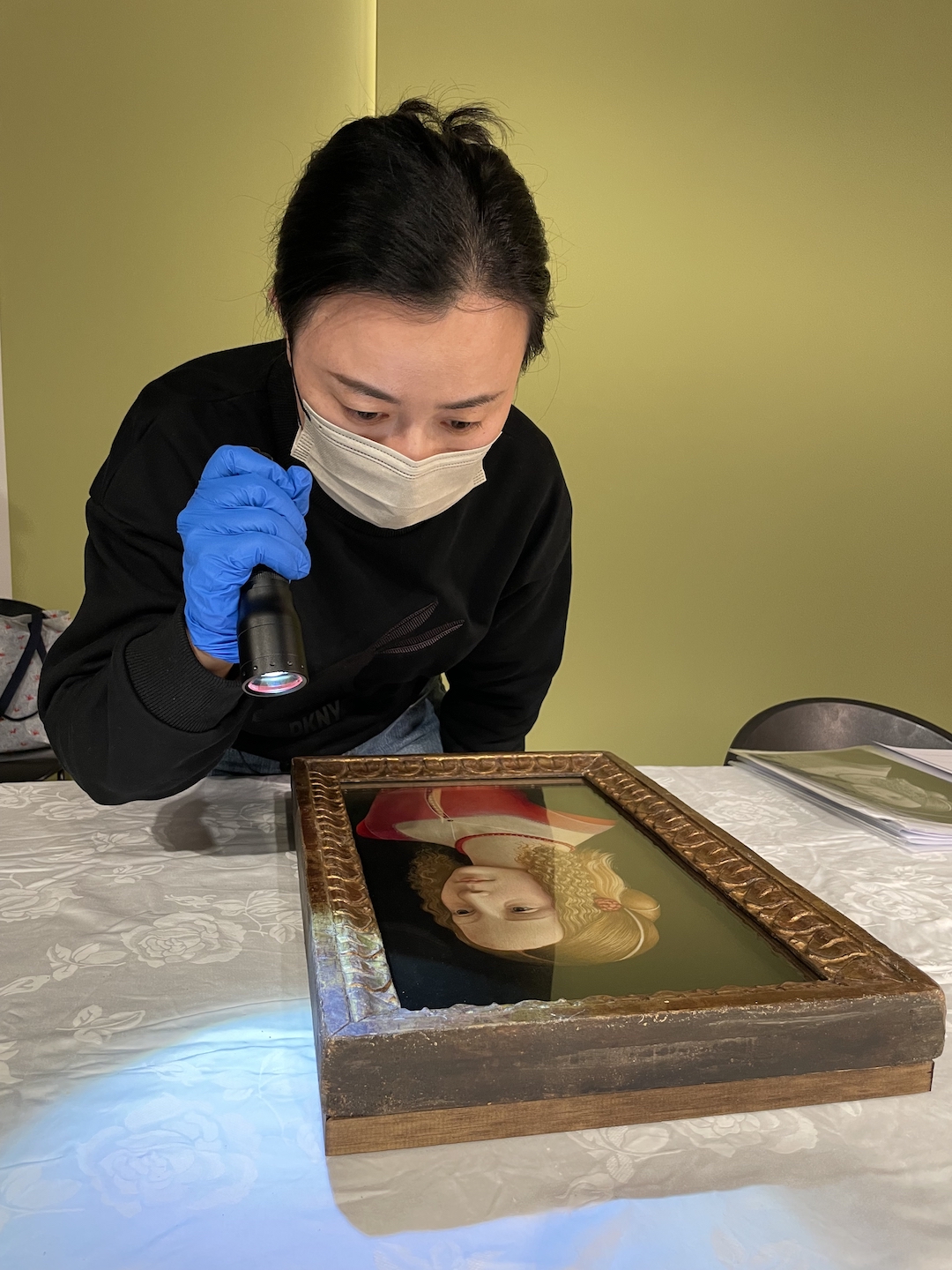
Shanghai Museum's "British National Gallery Collection Exhibition" exhibition site
The most important thing is to ensure the overall lineup of masterpieces of European classical art masters in its collection. Our museum leaders and curatorial team hope that Van Gogh's works can come, preferably "Sunflower", but because "Sunflower" has been there before It has toured in Japan and Australia, and it is impossible to go abroad for exhibition in the short term. Later, I won the work "Long Grass and Butterfly" hanging next to "Sunflower". There are only a few Van Gogh works in their collection, and there are very few opportunities for Van Gogh's authentic works to be exhibited in China, so we are very persistent in the matter of Van Gogh's works, which is a prerequisite for cooperation.
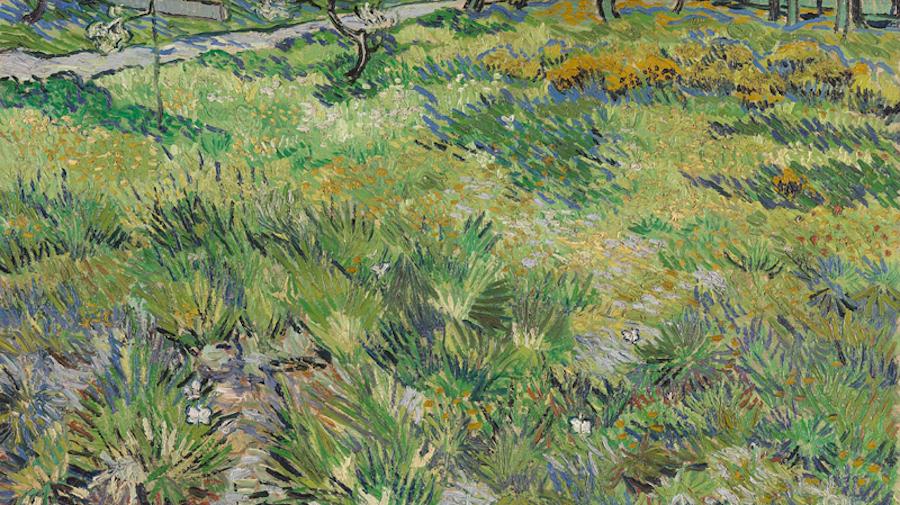
Van Gogh's "Long Grass and Butterflies" National Gallery Collection
"Museums have the responsibility to assume the responsibility of aesthetic education"
The Paper: Compared with the previous "National Gallery Collection Exhibition" in Japan and Australia, have there been any major changes in the exhibits?
Chu Xin: It can be said that there are almost no works on tour in Japan and Australia in this exhibition. The British side also considered to change a batch of works out of the protection of the artwork itself. Therefore, although the name of this exhibition is similar to that of the previous exhibition in Japan, the exhibits have actually been completely changed, and the theme of the exhibition is also different. Because the British National Gallery has a very rich collection of Western art, they can round out different series and combinations of works to tell the development of Western art history.
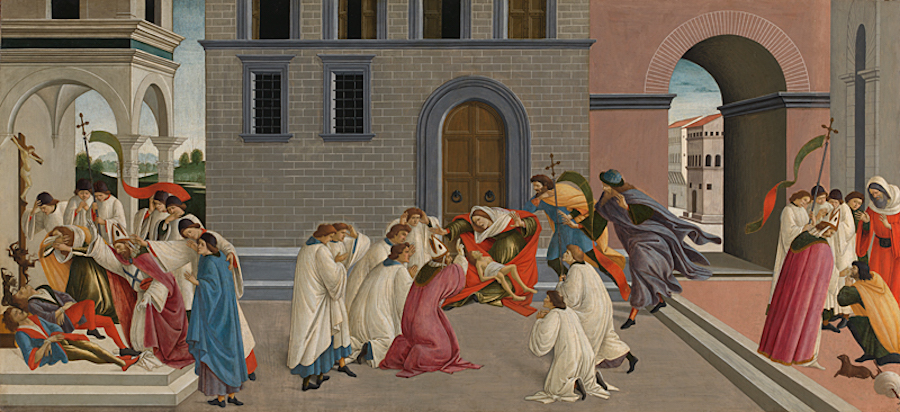
Botticelli's "Three Miracles of Saint Genobius" National Gallery Collection
The Paper: What is the curatorial thinking of this exhibition, and how do you ensure that these 52 works are fully displayed in the exhibition?
Chu Xin: To be honest, I am not a student of Western art history, but Chinese ancient art history. The cognition of Western art history is mainly based on some feelings gained from auditing some courses at the graduate and doctoral stages. So this time the main curator is the British National Gallery, and the most important thing for our team is to participate in the big ideas, exhibition positioning and exhibit selection.
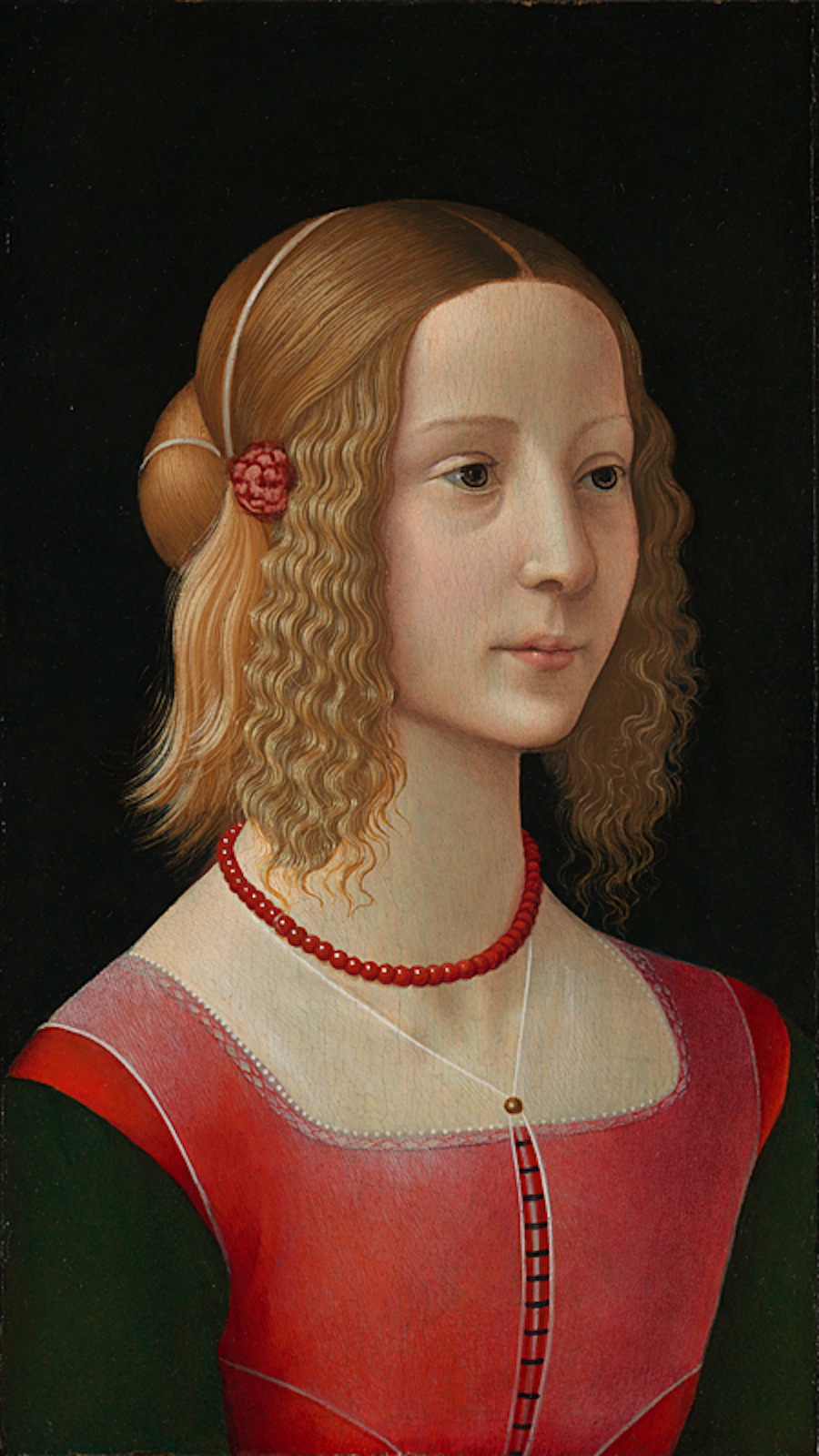
Ghirlandaio's "Portrait of a Girl" National Gallery Collection
The idea of curation is the idea of selecting exhibits. We hope that through this high-level and high-standard exhibition, the audience will have a real and face-to-face viewing opportunity of the artists in the art history textbook and their works. Such opportunities and experiences are very lacking in these years of being isolated by the epidemic.
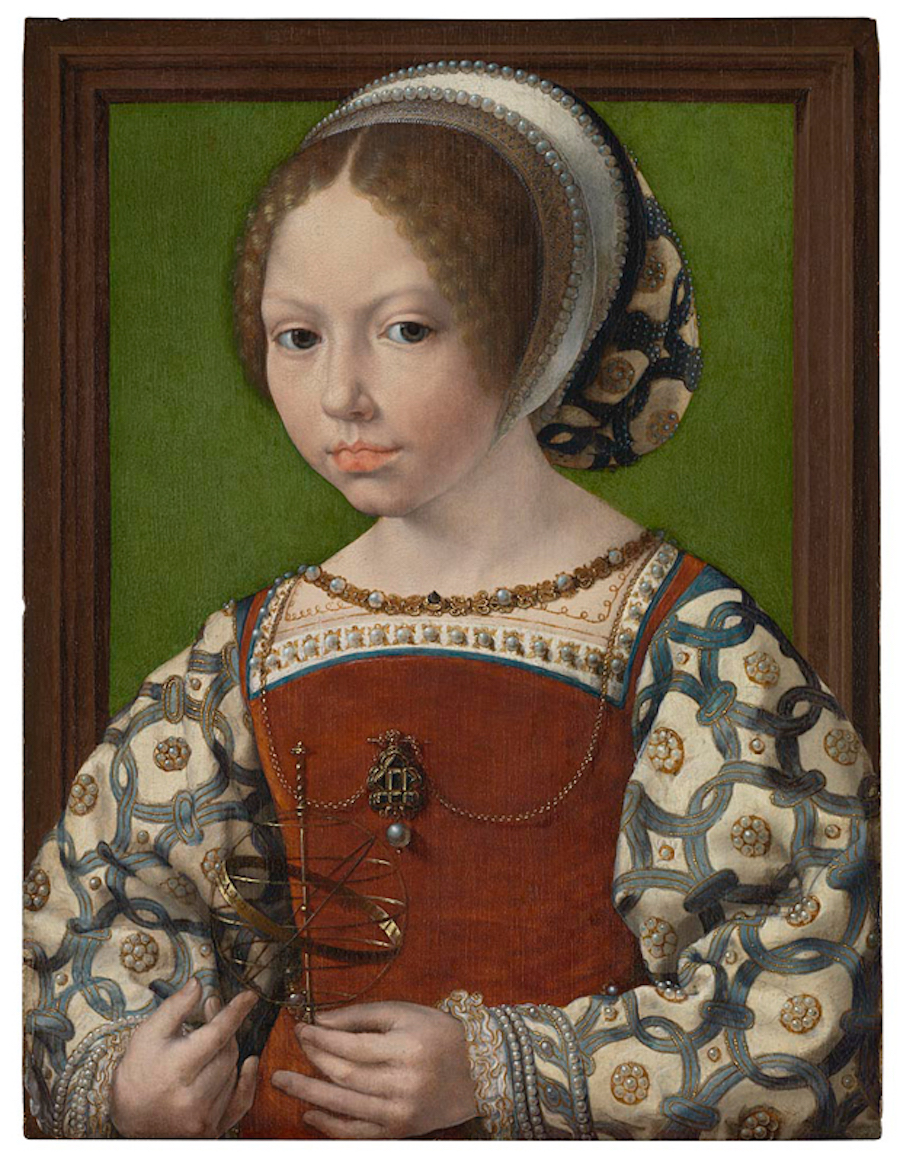
Gossett "The Young Princess (Dorothea of Denmark)" National Gallery Collection
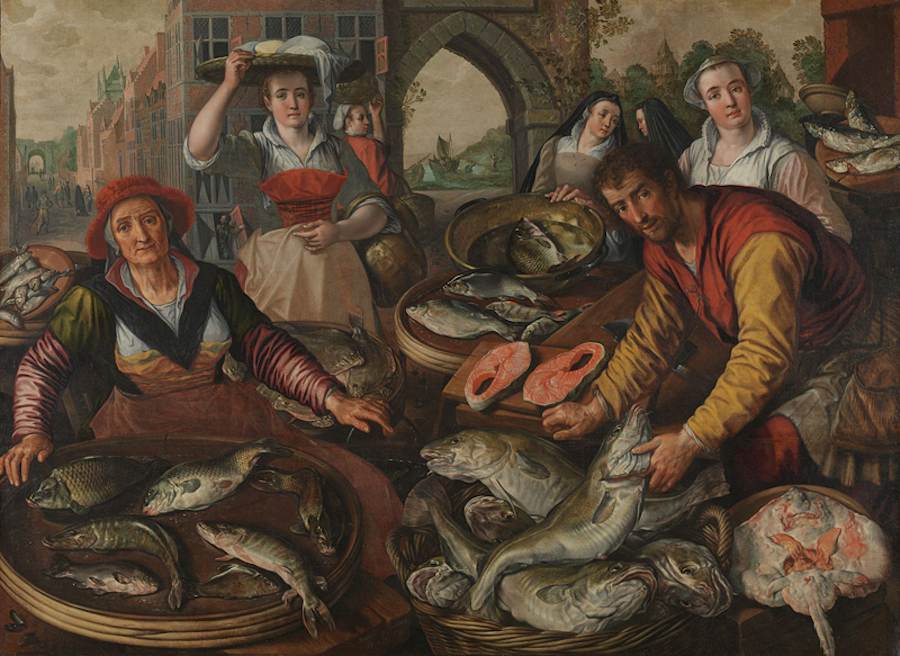
Bukeleer's "Four Elements: Water" National Gallery Collection
The exhibition is divided into eight sections: 1. Starting from the mid-Renaissance period represented by Florence Botticelli in the 15th century; 2. The high Renaissance period represented by Raphael in the early 16th century; 3. Focusing on northern Europe The Renaissance in the Netherlands tends to focus on secular themes. There are three sections on the Renaissance, from Florence, Italy to Venice, and then to the Dutch Highlands; the next four sections are Baroque art, represented by Caravaggio, including Poussin, Venezuela Lasquez; then five, Baroque art in northern Europe by Rembrandt and Van Dyck; six, Canaletto and European art in the context of the "Grand Tour" in the 18th century; seven, Van Gogh and Impressionism The art of painters, the three masters of Impressionism: Cézanne, Gauguin and Van Gogh, as well as the masterpieces of Manet and Renoir; 8. The last section is reserved for British native art, Romanticism represented by Turner Painters, as well as Constable, and the famous British portrait painter Gainsborough, a huge portrait of Thomas Lawrence.
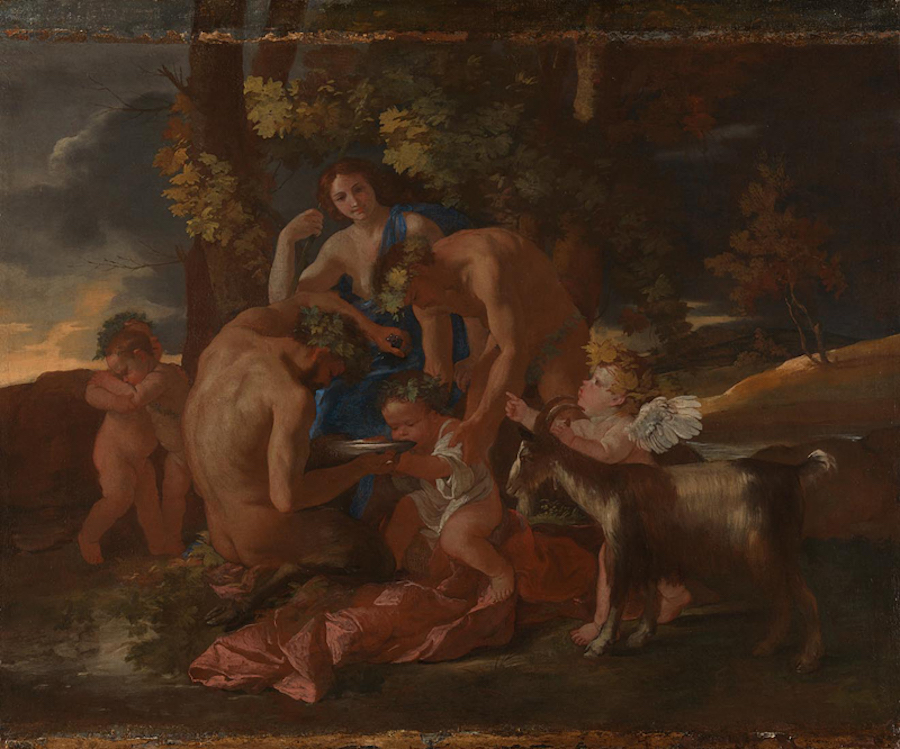
Poussin's "Cultivation of Dionysus" National Gallery Collection
The Paper: When it comes to curatorial ideas, Chinese audiences are more familiar with Van Gogh, Impressionist painters and Romantic painters represented by Turner in the following sections, and they may not have a good understanding of early European classical art masters and paintings. Not much, in the specific curatorial process, will there be some focus, how to better guide the audience to appreciate the works of art in different periods?
Chu Xin: We are usually more familiar with and easier to appreciate works of art that are closer to our own age. For example, as far as the history of Chinese art is concerned, we live closer to the Ming and Qing Dynasties and are more familiar with the art of the Ming and Qing Dynasties, but to understand the Ming and Qing Dynasties, we must understand the art of Song, Yuan and earlier. Well, the Renaissance is the most prosperous stage in the entire Western art, and the lack of understanding of this period is also a shortcoming. This is also an aesthetic education function that we think the Shanghai Museum should undertake, so that the audience can truly understand what is classic and what is It is the most representative work of European classical art masters.

Van Dyck's "Sir Stuart and Brothers" National Gallery Collection
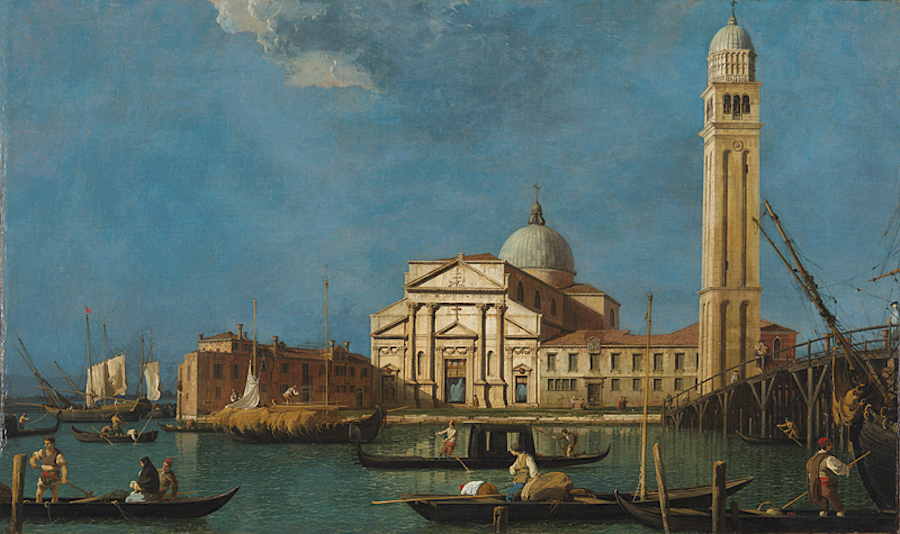
Canaletto, "Venice: St. Peter's Basilica in the Castello District" National Gallery Collection
From the Renaissance to Impressionism, I think this period of history cannot be ignored. We can't just focus on the art that we can understand in the later period, and forget how the road of Western art has come all the way. So I think our exhibition is at the textbook level, not only because it shows those famous artists in the history of Western art, but also traces the tradition along the veins of art history. I think this is also the guiding responsibility that museums should undertake, rather than what the audience can understand and what we should exhibit.
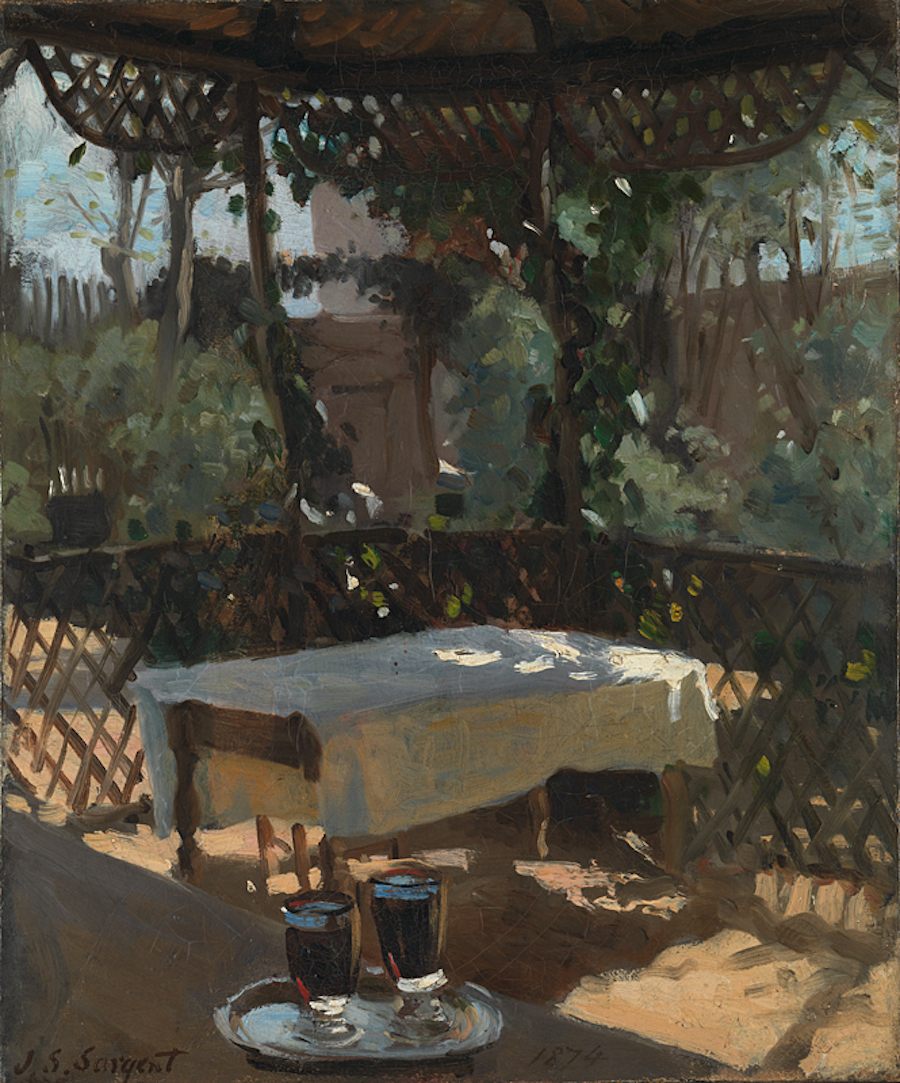
Sargent's "Wine Glass" National Gallery Collection
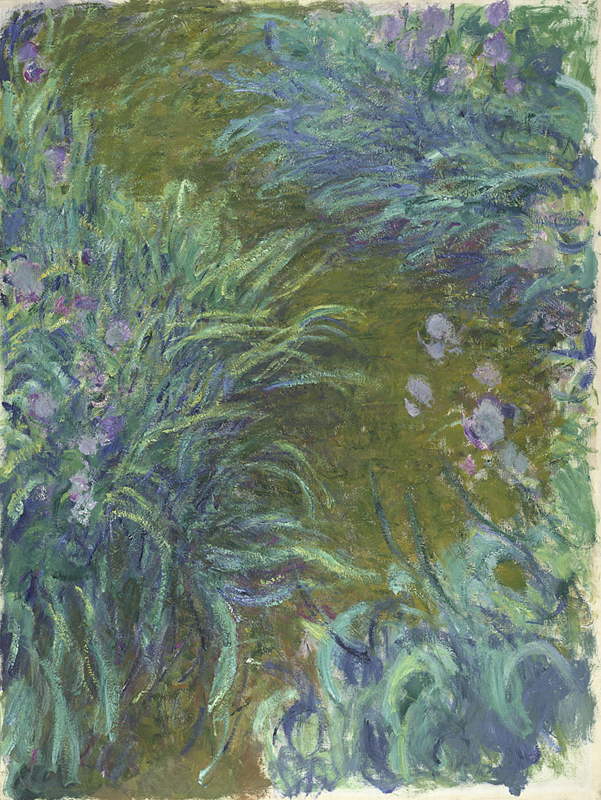
Monet's "Irises" National Gallery Collection
The Paper: The presentation of this exhibition, in addition to the traditional display form, is there any special design that allows the audience to better understand the works.
Chu Xin: In addition to the traditional exhibition form, in short, we will also bring a catalog, three kinds of exhibition hall guides, an additional digital exhibition, and a documentary film guide to meet the diverse needs of the audience.
Among them, the supporting catalog of the exhibition is being printed, and the director of the British National Gallery personally selects the cover for the catalog; in addition, we will have different levels of guided tours in the exhibition hall, because this is a paid exhibition, so each work will be There is a relatively detailed exhibition board to introduce the characteristics of the works, the artist's biographical background and other information. At the same time, we have also made two sets of paid guide systems, one is a more traditional audio guide, with 31 works selected, and the other is a smart guide, with 52 works selected, mainly for young audiences.
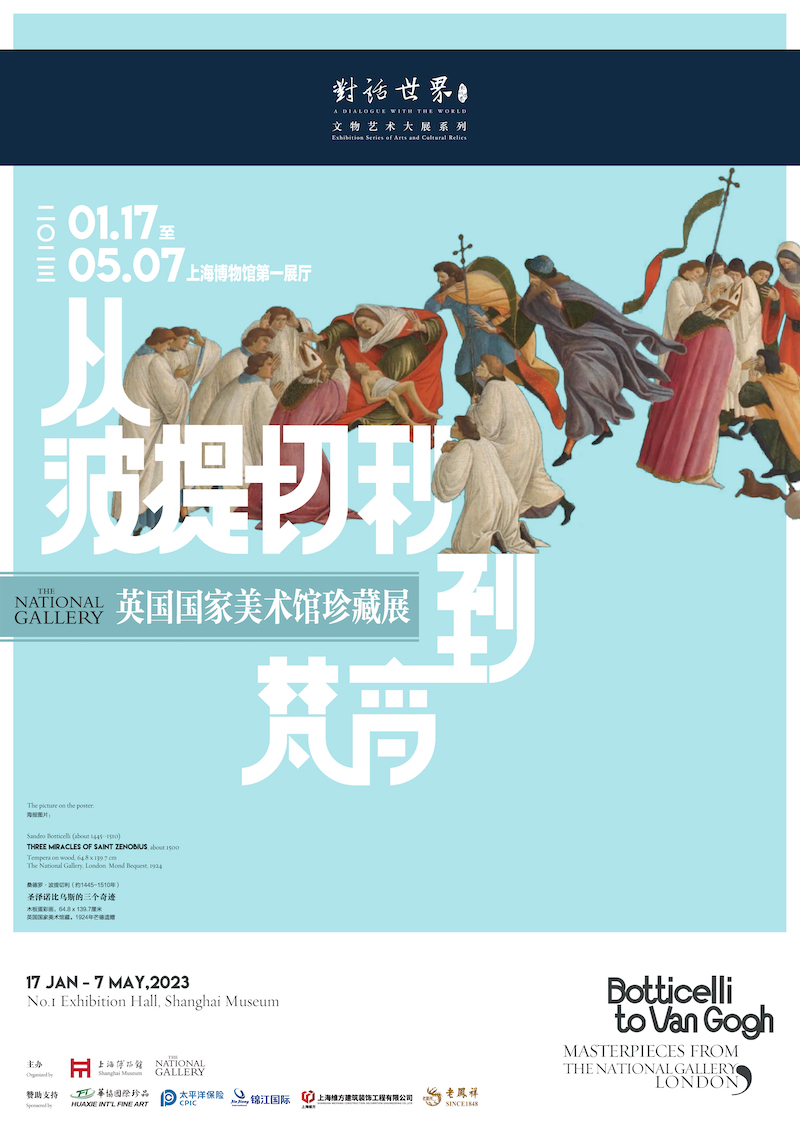
exhibition poster
At the same time, we will hold a lot of online activities in conjunction with this exhibition. Our museum will also launch a special educational guided documentary, which will be screened in the lecture hall of the Shanghai Museum, "Botticelli, Florence and the Medici Family", "Raphael Er: Nearly 10 4K ultra-high-definition themed art video works, such as "Young Painter" and "Mysterious Impressionism", I think this method is also a good attempt.
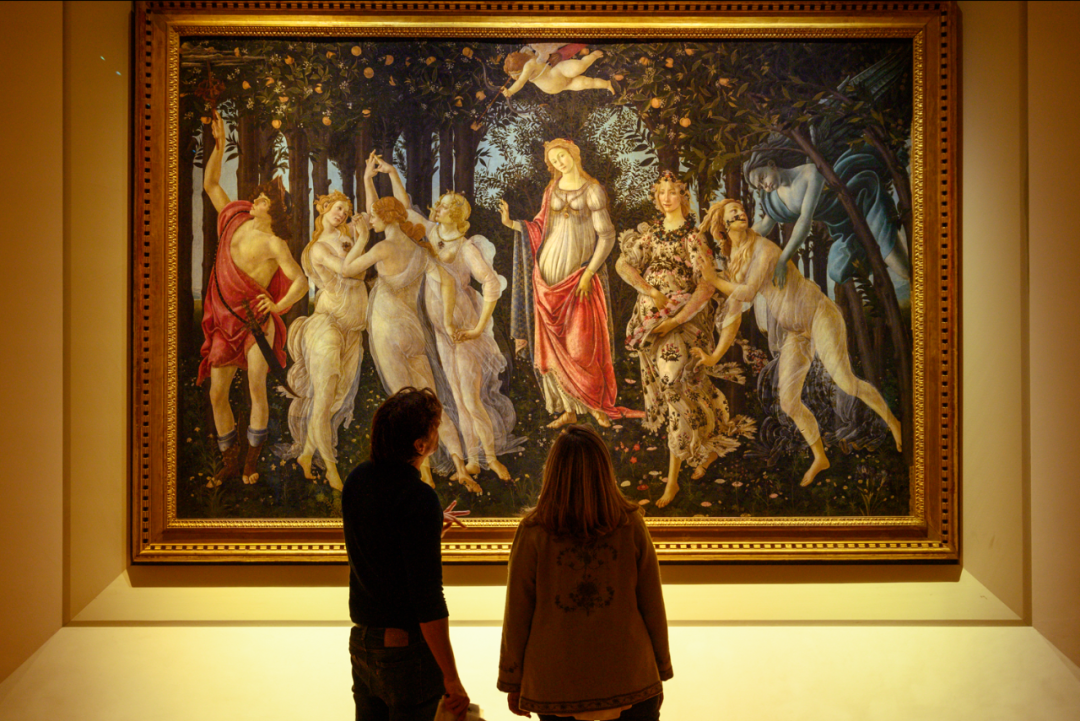
In conjunction with the exhibition, a guided tour of art video documentaries will be launched
In addition, an immersive light and shadow experience exhibition will be launched on the 4th floor, and 3 exhibits and 20 rare paintings that were not exhibited this time will be displayed in the form of digital display, such as Van Gogh's "Sunflower". The atmosphere of the museum is full inside, everyone is welcome to come and watch the exhibition, one ticket for two exhibitions.
I think an exhibition project is an all-round project. In addition to the shocking exhibits themselves, the creation of the entire exhibition hall, the setting off of the atmosphere, and the enjoyment of viewing, including education and publicity, must be matched, so that a perfect presentation can be made. exhibition. The Shanghai Museum has very rich experience and a strong team in exhibition operation. In addition to the exhibition itself, such as exhibition hall design, education, and media promotion are all done very professionally.

Shanghai Museum's "British National Gallery Collection Exhibition" exhibition site
As far as this exhibition is concerned, we hope that the audience can firstly enter the museum; secondly, they can directly face the original works. Such an opportunity has become particularly rare in recent years. The Shanghai Museum has always been at the forefront of international cultural exchanges, whether it is under the epidemic or in the past 70 years. Over the past 70 years, we have continued to deliver classic works of civilization and art history from different regions of the world to domestic audiences . This time also coincides with the 70th anniversary of the establishment of the Shanghai Museum. We hope to pay tribute to classics and traditions with such an exhibition.
The Paper: What do you think is the significance of this exhibition to ordinary audiences? How will Shanghai Expo fulfill the aesthetic education duties of the exhibition?
Chu Xin: The Shanghai Museum has held many influential exhibitions, including ancient and modern Chinese and foreign civilizations and exhibitions with social sensations. I am from Shanghai, and I really started to understand the Shanghai Museum from high school and university. A good exhibition and shocking exhibits will still affect me many years later. Looking back now, the so-called aesthetic education, art education, no matter how much you talk about in class, it’s better to face a painting at close range, see a real object, and feel it yourself.
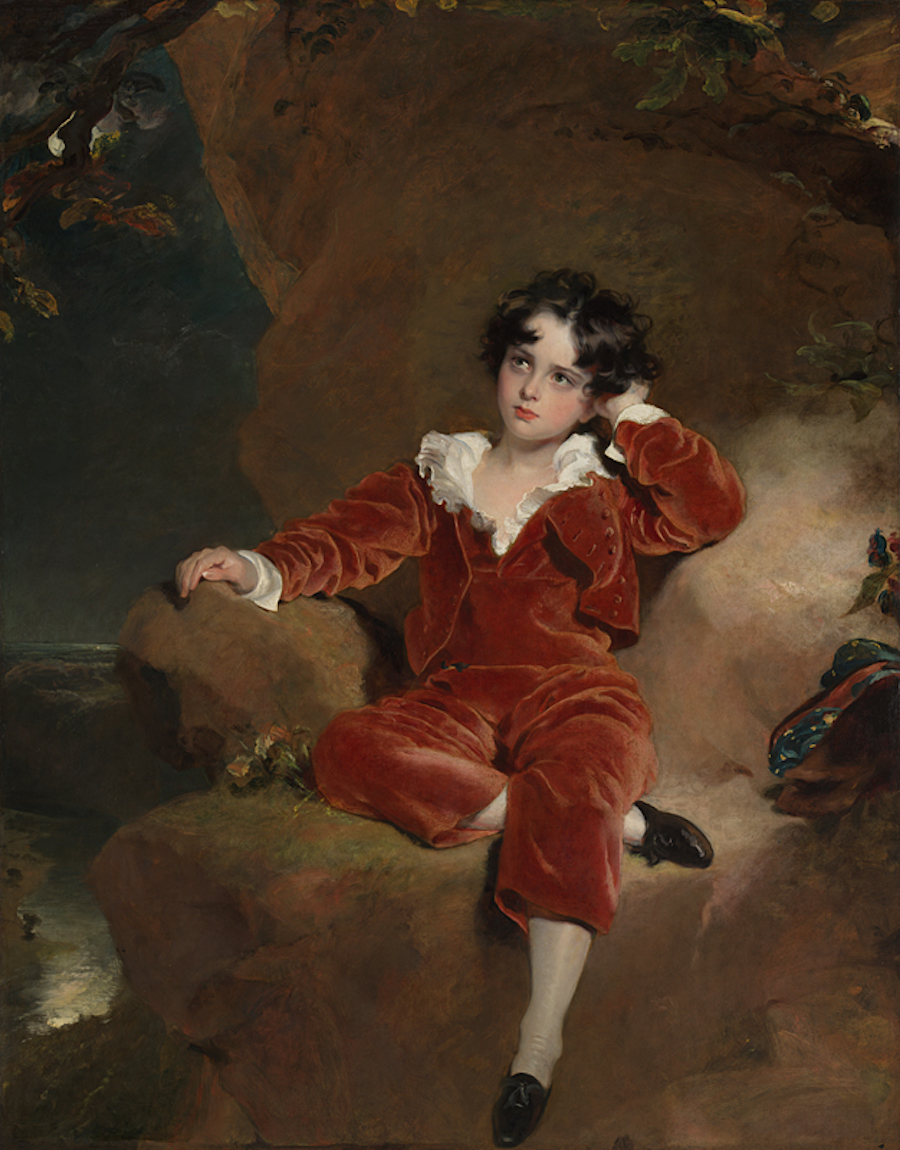
Sir Lawrence's "Portrait of William Lambton (Boy in Red)" National Gallery Collection
I think this is the role of aesthetic education, it is a subtle edification, it is a kind of vision improvement, and it is a kind of training for the eyes. I hope that the Shanghai Museum will always take on such a role, just like it once did, to bring the power of art to our generation. This tradition must continue.
"Expecting different interpretations of the exhibition by the audience"
The Paper: Which is your favorite work in the exhibition and which artist is your favorite, and why?
Chu Xin: I think this question is difficult to answer, because each work has its uniqueness, and the time span of the exhibits is very large, from the mid-Renaissance to Post-Impressionism, I think every audience also has their own Different works will be selected for unique feelings and aesthetic perspectives.

Caravaggio's "Boy Bitten by a Lizard" National Gallery
Personally, I prefer Caravaggio's "The Boy Bitten by a Lizard". Caravaggio is a symbol of the spirit of Italian art in the 17th century, and a particularly creative artist in the Baroque period. His paintings like to use contrasting chiaroscuro and dark backgrounds, and the pictures are very dramatic. And in this painting, after a boy was bitten by a lizard on his finger, the boy showed a frightened expression when he flung it away. Captured the momentary dynamic, as if the camera's shutter was frozen there. The capture of dynamic moments is rare in the paintings exhibited this time, so I especially like this one. Caravaggio, on the other hand, has a bad temper and likes to cause trouble. Because of a dispute, he fled, and finally died on the way to escape. His life was also full of drama.
The Paper: You talked about the many origins and fates between the Shanghai Museum and the National Gallery of England. If you cooperate with the National Gallery of England again in the future, which work do you most hope to bring to the audience?
Chu Xin: First of all, I especially hope that the curator and director of the curatorial department of the British National Gallery can visit the Shanghai Museum in person, so that we can discuss these issues face to face. From the perspective of the audience, of course I hope that Van Gogh's world-class masterpiece "Sunflower" will come, because Van Gogh is an artist that everyone will like. His "Sunflower" has such gorgeous colors and rich layers, showing infinite vitality.

Van Gogh's "Sunflowers", National Gallery Collection (not in this exhibit)
From my personal point of view, I am more inclined to the early artists, such as Jan van Eyck, the representative of northern artists in the Renaissance. His work "Giovanni Arnolfini and His Wife" is very Famous and one of my personal favourites. There are two people in the picture, a man and a woman holding hands, and the woman is wearing a bright green dress. There is also a mirror hanging on the wall behind them, and the image of the two protagonists and the priest opposite is reflected in the mirror. There are so many microscopic details in this painting that it is astounding.
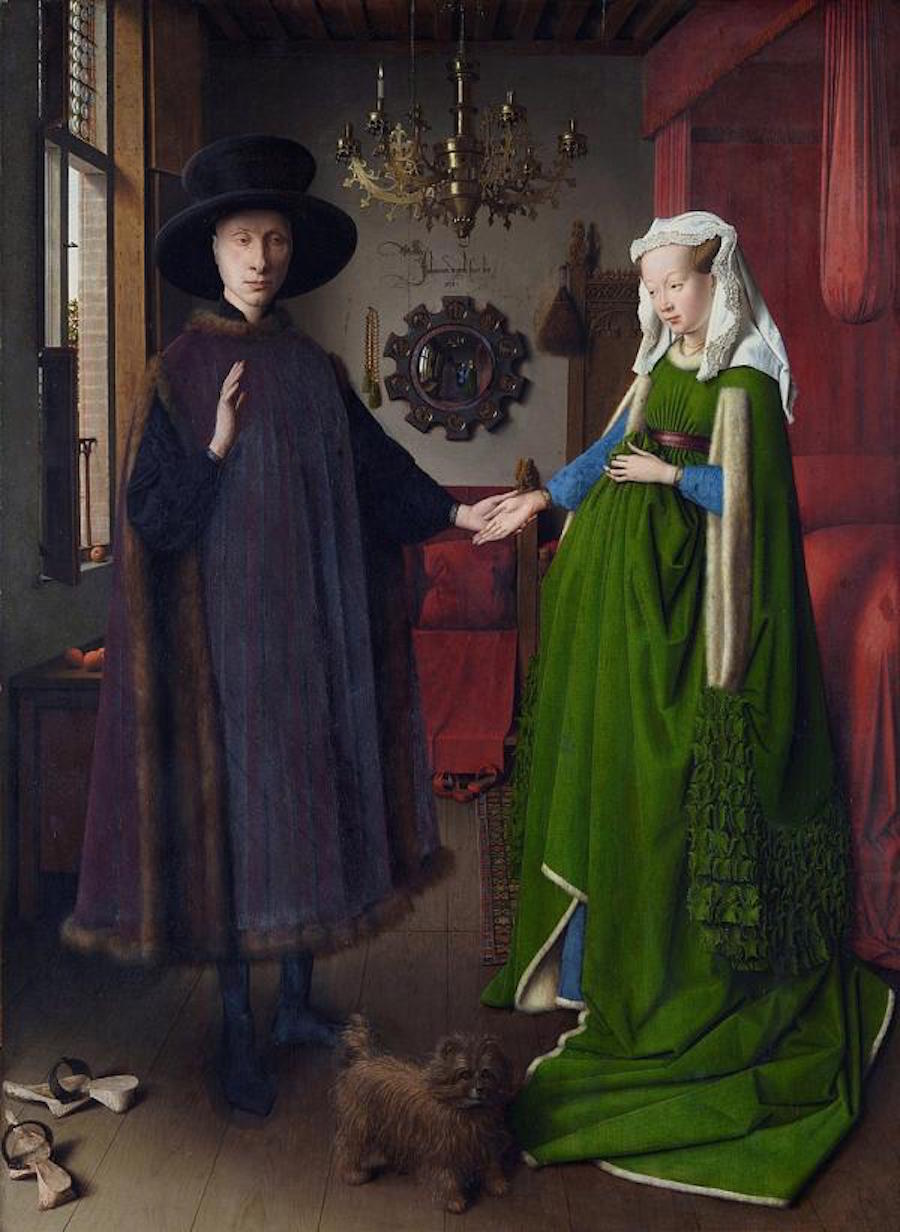
Jan van Eyck, Giovanni Arnolfini and His Wife, 1434, National Gallery (not in this exhibit)
Jan van Eyck was an early Renaissance painter. His paintings paid great attention to details, and he was also the first artist to use oil painting instead of tempera to carry out a technical revolution. His mastery of color, space and storytelling is masterful, and the paintings are full of stories and details that require interpretation.
At the beginning of 2020, the Belgian Museum held an unprecedented exhibition of Jan van Eyck, bringing together 70 works of this Northern Renaissance master from all over the world. The exhibition sold 144,000 tickets in advance, and later because The epidemic exhibition ended early, but I think it is unlikely that such a large-scale exhibition will reappear in the future.
When we communicated with the National Gallery of England this time, we also hoped to have the works of Jan van Eyck, but because he was a relatively early artist, they still declined due to cultural relic protection factors such as the preservation of the works. Yes, but I personally look forward to seeing the authentic works of this very unique artist.
